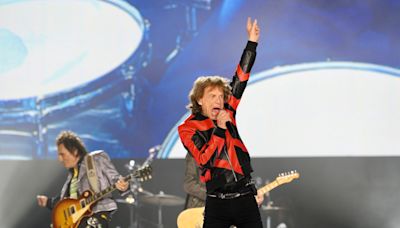Search results
- DictionarySur·ger·y/ˈsərj(ə)rē/
noun
- 1. the branch of medical practice that treats injuries, diseases, and deformities by the physical removal, repair, or readjustment of organs and tissues, often involving cutting into the body: "cardiac surgery"
- 2. a place where a doctor, dentist, or other medical practitioner treats or advises patients. British
Learn the origin, usage, and examples of the word surgery, which refers to a branch of medicine that uses operations or manual procedures to treat diseases or conditions. Find related phrases, articles, and translations of surgery on Merriam-Webster.com.
Learn the meaning of surgery as a medical operation or a place to see a doctor. Find out how to use surgery in sentences and collocations with other words.
- Overview
- History
- Present-day surgery
- GeneratedCaptionsTabForHeroSec
surgery, branch of medicine that is concerned with the treatment of injuries, diseases, and other disorders by manual and instrumental means. Surgery involves the management of acute injuries and illnesses as differentiated from chronic, slowly progressing diseases, except when patients with the latter type of disease must be operated upon.
A general treatment of surgery follows. For further treatments, see therapeutics; medicine.
Britannica Quiz
Is There a Doctor in the House? Firsts in Medicine Quiz
Surgery is as old as humanity, for anyone who has ever stanched a wound has acted as a surgeon. In some ancient civilizations surgery reached a rather high level of development, as in India, China, Egypt, and Hellenistic Greece. In Europe during the Middle Ages, the practice of surgery was not taught in most universities, and ignorant barbers instead wielded the knife, either on their own responsibility or upon being called into cases by physicians. The organization of the United Company of Barber Surgeons of London in 1540 marked the beginning of some control of the qualifications of those who performed operations. This guild was the precursor of the Royal College of Surgeons of England.
In the 18th century, with increasing knowledge of anatomy, such operative procedures as amputations of the extremities, excision of tumours on the surface of the body, and removal of stones from the urinary bladder had helped to firmly establish surgery in the medical curriculum. Accurate anatomical knowledge enabled surgeons to operate more rapidly; patients were sedated with opium or made drunk with alcohol, tied down, and a leg amputation, for example, could then be done in three to five minutes. The pain involved in such procedures, however, continued to limit expansion of the field until the introduction of ether anesthesia in 1846. The number of operations thereafter increased markedly, but only to accentuate the frequency and severity of “surgical infections.”
In the mid-19th century the French microbiologist Louis Pasteur developed an understanding of the relationship of bacteria to infectious diseases, and the application of this theory to wound sepsis by the British surgeon Joseph Lister from 1867 resulted in the technique of antisepsis, which brought about a remarkable reduction in the mortality rate from wound infections after operations. The twin emergence of anesthesia and antisepsis marked the beginning of modern surgery.
Wilhelm Conrad Röntgen’s discovery of X-rays at the turn of the 20th century added an important diagnostic tool to surgery, and the discovery of blood types in 1901 by Austrian biologist Karl Landsteiner made transfusions safer. New techniques of anesthesia involving not only new agents for inhalation but also regional anesthesia accomplished by nerve blocking (spinal and local anesthesia) were also introduced. The use of positive pressure and controlled respiration techniques (to prevent the lung from collapsing when the pleural cavity was opened) made chest surgery practical and relatively safe for the first time. The intravenous administration (injection into the veins) of anesthetic agents was also adopted. In the period from the 1930s to the 1960s, the replenishment of body fluids by intravenous infusion, the introduction of chemicals and antibiotics to fight infection and to treat the metabolically disturbed body, and the development of heart-lung machines helped bring surgery to a state in which every body cavity, system, organ, and area could safely be operated on.
Special offer for students! Check out our special academic rate and excel this spring semester!
Learn More
Contemporary surgical therapy is greatly helped by monitoring devices that are used during surgery and during the postoperative period. Blood pressure and pulse rate are monitored during an operation because a fall in the former and a rise in the latter give evidence of a critical loss of blood. Other items monitored are the heart contractions as indicated by electrocardiograms; tracings of brain waves recorded by electroencephalograms, which reflect changes in brain function; the oxygen level in arteries and veins; carbon dioxide partial pressure in the circulating blood; and respiratory volume and exchange. Intensive monitoring of the patient usually continues into the critical postoperative stage.
Asepsis, the freedom from contamination by pathogenic organisms, requires that all instruments and dry goods coming in contact with the surgical field be sterilized. This is accomplished by placing the materials in an autoclave, which subjects its contents to a period of steam under pressure. Chemical sterilization of some instruments is also used. The patient’s skin is sterilized by chemicals, and members of the surgical team scrub their hands and forearms with antiseptic or disinfectant soaps. Sterilized gowns, caps, and masks that filter the team’s exhaled air and sterilized gloves of disposable plastic complete the picture. Thereafter, attention to avoiding contact with nonsterilized objects is the basis of maintaining asepsis.
During an operation, hemostasis (the arresting of bleeding) is achieved by use of the hemostat, a clamp with ratchets that grasps blood vessels or tissue; after application of hemostats, suture materials are tied around the bleeding vessels. Absorbent sterile napkins called sponges, made of a variety of natural and synthetic materials, are used for drying the field. Bleeding may also be controlled by electrocautery, the use of an instrument heated with an electric current to cauterize, or burn, vessel tissue. The most commonly used instruments in surgery are still the scalpel (knife), hemostatic forceps, flexible tissue-holding forceps, wound retractors for exposure, crushing and noncrushing clamps for intestinal and vascular surgery, and the curved needle for working in depth.
The most common method of closing wounds is by sutures. There are two basic types of suture materials; absorbable ones such as catgut (which comes from sheep intestine) or synthetic substitutes; and nonabsorbable materials, such as nylon sutures, steel staples, or adhesive tissue tape. Catgut is still used extensively to tie off small blood vessels that are bleeding, and since the body absorbs it over time, no foreign materials are left in the wound to become a focus for disease organisms. Nylon stitches and steel staples are removed when sufficient healing has taken place.
There are three general techniques of wound treatment; primary intention, in which all tissues, including the skin, are closed with suture material after completion of the operation; secondary intention, in which the wound is left open and closes naturally; and third intention, in which the wound is left open for a number of days and then closed if it is found to be clean. The third technique is used in badly contaminated wounds to allow drainage and thus avoid the entrapment of microorganisms. Military surgeons use this technique on wounds contaminated by shell fragments, pieces of clothing, and dirt.
The 20th and 21st centuries witnessed several new surgical technologies to supplement the techniques of manual incision. Lasers became widely used to destroy tumours and other pigmented lesions, some of which are inaccessible by conventional surgery. They are also used to surgically weld detached retinas back in place and to coagulate blood vessels to stop them from bleeding. Stereotaxic surgery uses a three-dimensional system of coordinates obtained by X-ray photography to accurately focus high-intensity radiation, cold, heat, or chemicals on tumours located deep in the brain that could not otherwise be reached. Cryosurgery uses extreme cold to destroy warts and precancerous and cancerous skin lesions and to remove cataracts. Some traditional techniques of open surgery were replaced by the use of a thin flexible fibre-optic tube equipped with a light and a video connection; the tube, or endoscope, is inserted into various bodily passages and provides views of the interior of hollow organs or vessels. Accessories added to the endoscope allow small surgical procedures to be executed inside the body without making a major incision.
Surgery is the branch of medicine that treats injuries, diseases, and disorders by manual and instrumental means. Learn about the history of surgery, from ancient civilizations to modern techniques, and the types and methods of surgical procedures.
- The Editors of Encyclopaedia Britannica
Surgery is a medical specialty that uses manual and instrumental techniques to diagnose or treat pathological conditions (e.g., trauma, disease, injury, malignancy), to alter bodily functions (i.e., malabsorption created by bariatric surgery such as gastric bypass), to reconstruct or improve aesthetics and appearance (cosmetic surgery), or to ...
noun. the branch of medicine concerned with treating disease, injuries, etc, by means of manual or operative procedures, esp by incision into the body. the performance of such procedures by a surgeon. a place where a doctor, dentist, etc, can be consulted.
Learn the meaning of surgery as a medical treatment or a place where doctors see patients. Find out how to use surgery in different contexts and collocations with the Oxford Advanced Learner's Dictionary.
Surgery is the branch of medicine that deals with the diagnosis and treatment of injury, deformity, and disease by the use of instruments. It can also refer to a particular operation or a place where a surgeon works. Learn more about the word origin, synonyms, and related terms.



